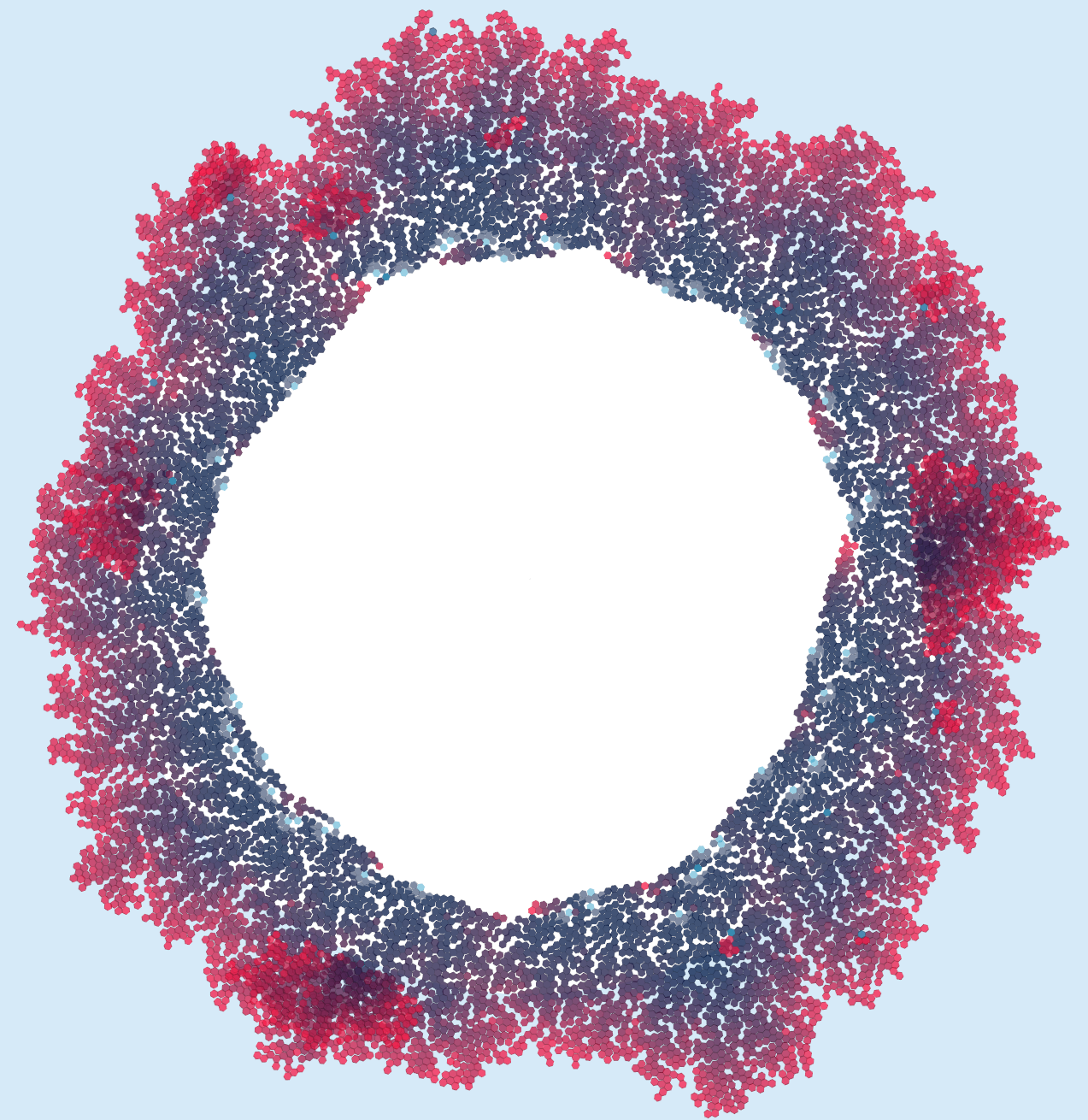Shape Analysis Group
Modeling chirality in vaterite crystals
Chirality, the inability of a structure to be superimposed onto its mirror image, is exhibited in almost all biological systems. Vaterite (calcium carbonate) crystals are found in various organisms in which biomineralization occurs, ranging from skeletons of marine organisms to the inner ears of humans and the presence of specific amino acids in these crystals induces chirality. The crystals are made up of nano pseudo-hexagonal structures and according to Wenge et al. [1], the presence of L-Asp amino acid results in right-handed or counter clockwise chirality whereas the presence of D-Asp amino acids results in left-handed or clockwise chirality, all due to a nanoparticle tilting growth mechanism. This project looks at simulating and modeling the tilting mechanisms that give rise to chirality in order to better understand chirality as it is found in nature.
Related Publications
Wenge Jiang, Michael S. Pacella, Dimitra Athanasiadou, Valentin Nelea, Hojatollah Vali, Robert M. Hazen,Jeffrey J. Gray, and Marc D. McKee.
Chiral acidic amino acids induce chiral hierarchical structure in calcium carbonate
Nature Communications 8, 2017.
[PDF]
